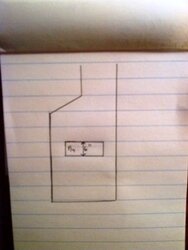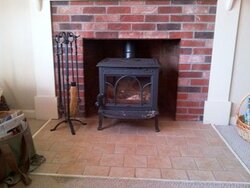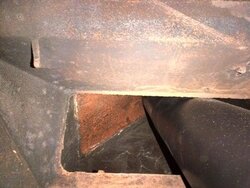- Mar 17, 2013
- 9
This is my first year burning with a wood stove. I did the install myself and I was running an oval shaped stove pipe up through my flu. However, I removed it because the Jotul wouldn't draw anymore. When I removed the stove pipe the creosote was considerable. Lots of black wet tar.
I expanded the opening in my flu and replaced the pipe with standard 6" stove pipe. Due to the angle of my chimney my stove pipe only extends up about 4' into the chimney.
I burned all day today and noticed the same black tar again dripping back down. I am using season wood, but I am pretty unhappy with this Jotul. It just doesn't put out that much heat.
Is the considerable creosote caused by the stove not burning hot enough? Is it because my stove pipe isn't long enough?
I expanded the opening in my flu and replaced the pipe with standard 6" stove pipe. Due to the angle of my chimney my stove pipe only extends up about 4' into the chimney.
I burned all day today and noticed the same black tar again dripping back down. I am using season wood, but I am pretty unhappy with this Jotul. It just doesn't put out that much heat.
Is the considerable creosote caused by the stove not burning hot enough? Is it because my stove pipe isn't long enough?






